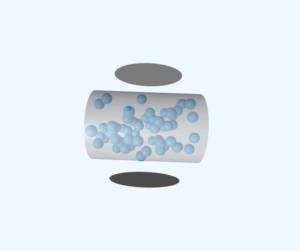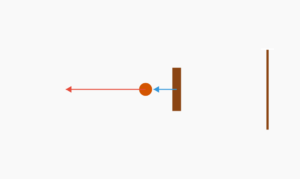Water Molecule Volume Ratio Simulation
Example
Question:
The density of water is \(1000\,\mathrm{kg\,m^{-3}}\). The density of water vapour at \(100^\circ\mathrm{C}\) and 1 atm pressure is \(0.6\,\mathrm{kg\,m^{-3}}\). The volume of a molecule multiplied by the total number gives the molecular volume. Estimate the ratio (or fraction) of the molecular volume to the total volume occupied by the water vapour under the above conditions of temperature and pressure.
Solution:
For a given mass of water molecules, the density is less if volume is large. So the volume of the vapour is
\[
\frac{1000}{0.6} = \frac{1}{6 \times 10^{-4}}
\]
times larger.
If densities of bulk water and water molecules are the same, the fraction of molecular volume to the total volume in liquid state is 1. As volume in vapour state has increased, the fractional volume is less by the same amount, i.e.,
\[
6 \times 10^{-4}
\]
Example 13.1
The density of water is 1000 kg/m³. The density of water vapour at 100°C and 1 atm pressure is 0.6 kg/m³.
The volume of a molecule multiplied by the total number gives what is called molecular volume.
The ratio (or fraction) of the molecular volume to the total volume occupied by the water vapour is approximately 6 × 10⁻⁴.



